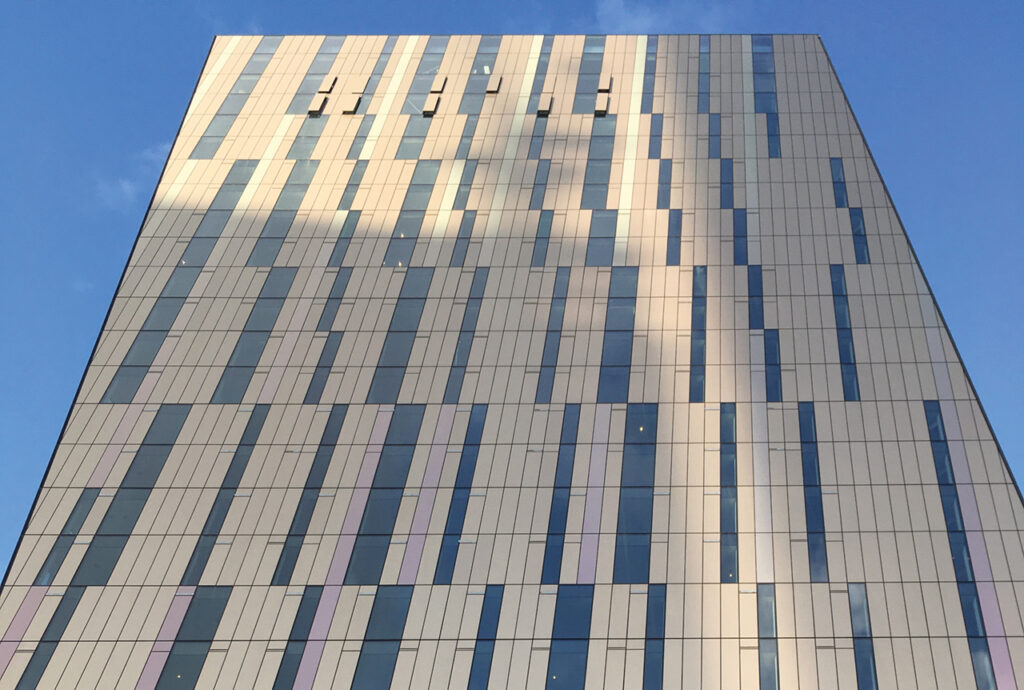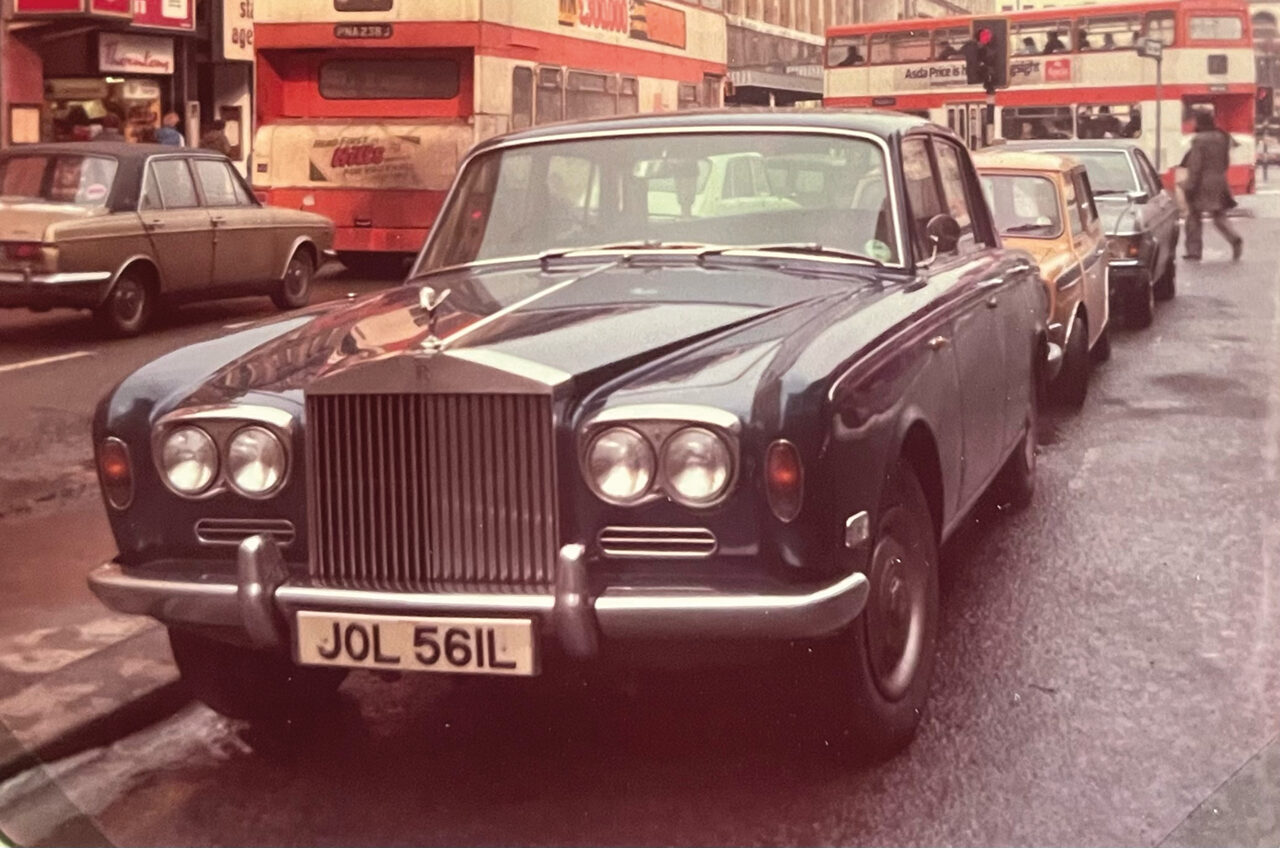My Manchesters
Many artists, musicians and writers before him have been influenced by the city, but Nicholas Royle is doubly influenced by it. In his new collection of short stories there are two versions of it
Everyone has their own version of where they live. You have your Manchester. I have mine. But I have two Manchesters. I have the Manchester I got to know as a child and adolescent, before I went to university in London and stayed for two decades, and the Manchester I found when I came back in 2003.
Born in Sale and brought up mostly in Baguley and Altrincham, I would go into Manchester on the train from Navigation Road to check out the book stall on Church Street. It – or its descendant – is still there, at the corner with High Street. Walking down Market Street in 1980 I heard a slow, majestic drum beat echoing around the narrow entrance to HMV. I entered, went upstairs and asked what was playing. Sister Europe by the Psychedelic Furs. I bought it and I still have it, even though I no longer own a record player. Never mind: I’m listening to it, as I write these words, on my Mac via Bluetooth AirPods. If these fail I can take them back to the Arndale Centre, which was there then, even if the Apple Store wasn’t.
I loved the Manchester of the late 1970s and early 1980s, the sooty buildings, the pet shops lining Tib Street before the Northern Quarter was invented, the British Rail depot at Longsight where you could climb a wall, cross the tracks and explore the train sheds. The Aaben Cinema in Hulme, where, with my mum, I carried a ghettoblaster into a double bill of Assault on Precinct 13 and Halloween so that I could record the entire soundtracks, dialogue and all, onto TDK D-C90s. I waited in long queues outside the Apollo to see the Skids, Tubeway Army, Siouxsie and the Banshees. I saw the Psychedelic Furs at Rotters and Fad Gadget at Rafters, where I asked Bernard Albrecht, as he was then, and Peter Hook and Stephen Morris, for their autographs. Could I have them twice, I asked, for me and for my friend who couldn’t come? Hooky retorted “Trying to make yourself a fuckin’ millionaire?” before signing twice anyway. For younger readers, autographs were how we proved we had met famous people, before selfies. I would see Fad Gadget one last time at the Squat on Devas Street, supported by local band Performance, whose four-track cassette and one single I still have.
I left Manchester in 1982, missing the Haçienda, the Smiths and Madchester, to go to uni in London, and didn’t come back until 2003. That’s not true. I didn’t come back for about ten years and then started to come back on alternate Saturdays in the early 1990s to go to Maine Road, where I would fail to see most of the action, such as it was at the time, as I stood behind taller men in the Kippax, before David Entwistle and I bought season tickets in the Main Stand. Enty and I had been at primary school together in Alty and gone fishing together on the Bridgewater Canal, at the Crucian Pit by the airport and even in a secret pond entirely enclosed by private gardens in Timperley.
When I came back to live in Manchester in 2003, with a young family, I moved to Didsbury, which, in the past, I had only ever visited to go to school friends’ parties. I took my children to the Crucian Pit, fighting through six-feet-high brambles and nettles to reach it and finding it choked with weed. I walked around Timperley for days looking for the hidden pond there before thinking to look at a map and then knocking on doors to find a friendly resident to let me have a look. It was, of course, smaller than I remembered. I walked miles along the towpath of the Bridgewater Canal, trying to pinpoint where I had sat fishing for tiny roach with Enty and John Wright and struggling because all those houses on the far bank hadn’t been there 25 years earlier.

I started hearing about a local band called Performance, which was definitely uncanny, like two decades hadn’t passed under the Gouranga bridge. I went to see them and, rather wonderfully, they were brilliant, so I kept on going to see them and the lead singer and I became friends and, later, colleagues. In Tesco in East Didsbury I bumped into Andy Wilson, who had been in my class at secondary school before joining another local band, the Passage, full time, and later becoming a DJ in Ibiza. In Sainsbury’s at Cheadle Royal, momentarily overwhelmed by something – everything – I burst into tears. I still don’t really know what that was about.
The pet shops had gone from Tib Street. People talked about the Northern Quarter, whatever that was. The Corn Exchange had been turned into posh shops. The signature wavy canopy attached to Marks & Spencer had gone – along with a great deal else – in the IRA bomb blast of 1996. The Arndale Centre, which had always been horrible, was horrible still, but in new and different ways, although, to be fair, I still detour through the Arndale Market in order to pass close to the fresh fish stall. On Market Street, the Market Centre, an underground market reached by escalators, where I once saw Charlie Harper of punk band UK Subs and asked for his autograph, had gone, although according to photographs posted online by urban explorer Jake Parr, clings on in ghostly form beneath the streets, if you know which grille to crawl through.
I started writing stories set both in this new Manchester and in my old Manchester, while the new Manchester, I found, started changing before my eyes. The Maths Tower at the University of Manchester was carefully dismantled and demolished, a can of baked beans going up in its place. The long-gone Haçienda, which I had never visited, made way for a block of flats – or, to get with the new vernacular, apartments. Huge towers started sprouting from the earth. Beetham Tower, where you could stand on a glass floor 23 storeys in the air, as long as you didn’t overdo the cocktails in Cloud 23. Axis Tower, which, in certain lights, if not all lights, bears a head-spinning resemblance to a packet of 20 B&H. The four bewildering towers of Deansgate Square, which, as I watched them being built and once they were complete, I decided only appeared to be different heights because of the various perspectives from which I would view them, but are, in fact, different heights.
I wrote a story set in a pub in Chorlton that, in the 1980s, had been a snooker club where I had played with my dad. Although I met New Order in Rafters, I regretted never having seen Joy Division. Writing a story made out of the lyrics to Unknown Pleasures was a cathartic experience. Identity politics may have existed, as a term and as a movement, since the late 1970s, but the rate at which it is developing and affecting more and more lives is almost incalculable. It’s possible that Manchester has changed more in the last 20 years than it did in the two decades between my leaving it and returning. It was, is, and, I suspect, always will be, an exciting and inspiring place to live.
Manchester Uncanny by Nicholas Royle (Confingo, £12.99) is out now

Leave a reply
Your email address will not be published.